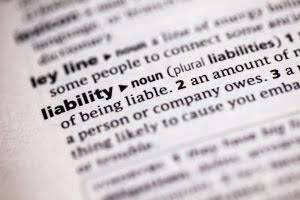Transposing Digits: A Deep Dive into Common Mistakes

These three methods use a single check digit and will therefore fail to capture around 10% of more complex errors. By implementing these measures, individuals and businesses can significantly reduce the likelihood of transposition errors and maintain the integrity of their financial records. OCR technology is particularly useful when dealing with transposition errors in printed documents.
Tools and Techniques for Detecting Transposition Errors
This type of journal entry is called a “correcting entry.” Correcting entries adjust an accounting period’s retained earnings i.e. your profit minus expenses. Correcting entries are part of the accrual accounting system, which uses double-entry bookkeeping. Many accounting errors can be identified by checking your trial balance and/or performing reconciliations, such as comparing your accounting records to your bank statement.
How Transposition Errors Impact Financial Statements?

While this method is time-consuming and prone to human error, it can be useful for small datasets or when other tools are not available. The most common cause is human error, which can be attributed to the inherent limitations of manual data entry. When typing or transcribing information, individuals may unintentionally swap adjacent characters or digits, especially when dealing with long sequences of numbers or repetitive patterns. Additionally, fatigue, distraction, or lack of attention to detail can amplify the likelihood of these errors. Understanding the psychology behind transposition errors is crucial for developing effective strategies to prevent them. By considering the limitations of working memory, perceptual https://heizhaus-gebesee.de/wordpress/?p=1458 and visual processing, as well as linguistic and phonological factors, individuals can reduce the likelihood of such errors.
Trial Balance Doesn’t Balance
They compare the input text against a database of correctly spelled words and grammatical rules, providing suggestions for corrections. However, spell checkers and grammar checkers may not always identify transposition errors accurately, especially if the swapped numbers form a valid word or phrase. In mathematics, transposition errors can occur in a variety of contexts, ranging from simple arithmetic calculations to more advanced algebraic manipulations. For example, when calculating the sum of two numbers, a transposition error may lead to the incorrect addition of digits, resulting in an inaccurate final result. Similarly, in algebraic equations, a transposition error can completely alter the solution, leading to incorrect interpretations of mathematical relationships.
- From the perspective of an accountant, a transposition error can be a simple oversight; yet, for an auditor, it might raise red flags about the company’s accounting processes.
- Transposition errors can also be more likely to occur when dealing with complex equations or when working under time pressure, such as during exams or quizzes.
- OCR technology has emerged as a game-changer in the accounting industry, particularly when dealing with large volumes of data.
- For instance, a transposed digit in a customer’s contact number can hinder communication, causing delays or missed opportunities.
- They can have implications for taxation and regulatory compliance, creating legal challenges.
Regularly comparing account balances against external sources, such as bank statements, can reveal discrepancies that stem from transposition errors. Reconciliation should be performed at consistent intervals to catch errors promptly, reducing the potential for compounded mistakes that can escalate over time. A transposition error is a kind of clerical error that occurs when two digits or characters are accidentally switched. In financial contexts, these errors typically occur when recording transactions or data entries. Though it might seem minor, transposition errors can have significant impacts, especially in trading, finance, and computational systems.

Manual verification and visual inspection can be effective for small datasets or when a quick check is needed. However, for larger datasets and more complex data structures, automated tools such as data validation rules, comparison algorithms, and OCR software offer more efficient and accurate solutions. By leveraging the right tools and techniques, you can unravel the mystery of transposition errors and ensure the integrity of your data. The accuracy of a trial balance is not just about numbers aligning; it’s about the trust stakeholders place in a company’s financial statements. Transposition errors, while seemingly minor, can have a profound impact on financial statements.
How Can You Avoid Transposition Errors?
This common mistake can occur in scenarios involving numerical data, such as financial transactions, accounting records, or data entry processes. Because transposition errors create an imbalance between debits and credits, it is difficult to spot them in accounting records. To determine whether a transposition error has occurred, divide the original data by nine. For example, if the data on two sides of an account are transposed, the $900 difference will be evenly divisible by nine, and there will be no remainder. For transposition errors that occur during the digitization of physical documents, OCR software can be a valuable tool. OCR technology converts scanned or photographed images of text into editable and searchable data.
Systems and Project Management: The Backbone of Business Efficiency

The impact of these errors can be significant, affecting the accuracy and reliability of financial reports, which can in turn influence decision-making and strategic planning within an organization. Another powerful tool for detecting transposition errors is the use of comparison algorithms. These algorithms compare two sets of data and identify any differences or discrepancies. For example, the Levenshtein distance algorithm calculates the minimum number of single-character edits (insertions, income summary deletions, or substitutions) required to transform one string into another. By applying this algorithm to compare the original data with the transcribed data, any transposition errors can be highlighted. Comparison algorithms offer a robust and automated approach to detect transposition errors, especially for complex datasets.

As the name suggest, transposition errors occur when characters have “transposed” — that is, they have switched places. The most common way for characters to transpose error be transposed is when a user is touch typing at a speed that makes them input one character, before the other. The trade-off between the sophistication of detection and the efficiency of operations will often dictate the approach organizations take towards managing and mitigating transposition errors effectively. The meticulous scrutiny of financial records allows for a thorough examination of entries, ensuring that any transposition errors are promptly identified and rectified. Once identified, rectifying these errors involves adjusting the misreported figures and reconciling the affected accounts to ensure the accuracy of the trial balance.

